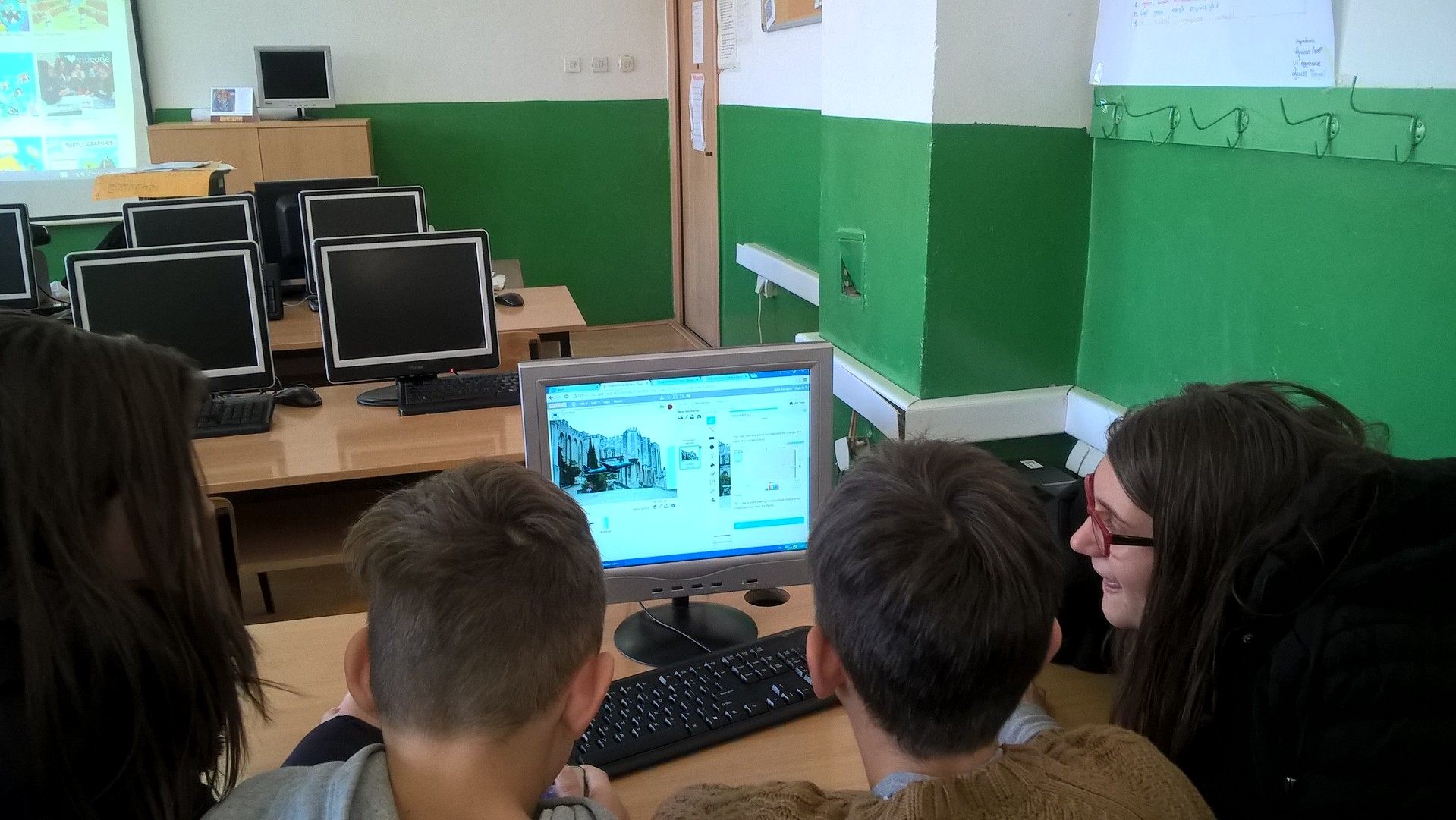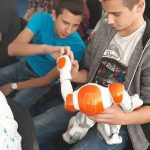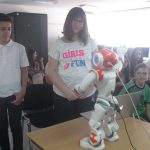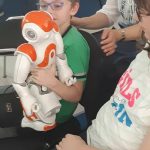Most educators seem to be using Scratch to teach computer science and programming skills. However, Scratch is a very powerful tool that can help students understand many concepts in all primary school subjects like: math, science, geography, etc..
Scratch is great for all student levels, both beginner and advanced. Keep in mind, however, that the tool is best used by educators who have at least a basic programming background. This is especially true when fielding student questions or helping those who are struggling with project execution.
One way to learn for the students is by creating digital stories. Students develop and design a situation – it can be everyday situation, conflict resolution, the water cycle etc… Then they create a story using Scratch, even they can make an interactive game in which the end depends on the character decision.
Scratch is a free visual programming language designed especially for ages 8 to 16 but is used by people of all ages (Scratch , 2016). It allows anyone to use Scratch online on the website as well as in an offline editor. Designed by the MIT Lifelong Kindergarten Group, Scratch is a type of “block programming which uses graphical blocks to represent program commands (Crook, 2009).”
Here I will show you how my students developed stories and learned about digital privacy and property.
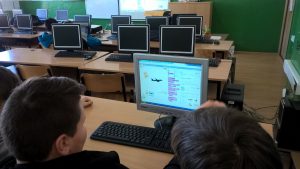
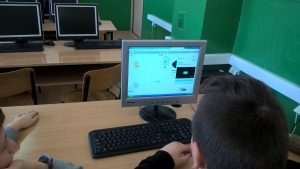
Objectives:
- students will learn how to behave properly online
- Learn about privacy and intelectual property on internet
- students learn how to protect themselvesonline
- Develop critical thinking
- Learn how to create simple code in Scratch
- Learn how to create digital story in Scrath
Preparation: Talk to the students about rules in every day life as part of human culture. What will happen if we don’t follow the rules? Without etiquette, members of society would show far too much impatience and disrespect for one another..
Main activity: The teacher explains the students that in the online world rules are also important
Discuss:
1.Why are rules of conduct important when communicating online?
2.What rules should keep in mind when online?
3.What are some good things to do in your online communication?
4.What are some things to avoid?
Situation 1: Jane sits on a school computer. But she realizes that Justin didn’t sign out of his email. Jane reads his emails and downloads some of his photos. What did Jane do wrong? Did she invade Justin’s privacy. Did Justin do something wrong?
Discussion with the students.
The teachers explains the students about the right for privacy online.
Activity: Students work in pair. They should come up with a situation online where online privacy is invaded.
Presentation of the work.
Situation 2: George plays with his friend Miles on Miles’s computer. He sees the homework they have for tomorrow which Miles has already finished. While Miles wasn’t there he copies the homework and the next day show to the teacher as his own. What did George do wrong?
The teacher explains the right for property online.
Activity: Students work in pair. They should come up with situation where the property right is invaded.
Presentation of the work.
Activity: The teacher explains the students that they will use Scratch to create digital stories for the situations they came up in the previous activities.
He has one digital story that he show as an example to the students.
He explains to the students the blocks: move, say, when clicked, broadcast and when I receive message. He explains that blocks broadcast and when I receive message are used to make the dialog order of the characters.
Students work in pairs. They create digital story presenting the situation they came up with in the previous activity.
Presentation of all the digital stories.
Here you can find some of the stories created during this activity.
Georgina Dimova

